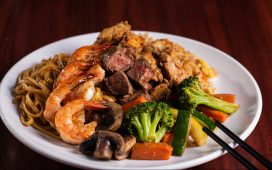There are many different frying pans available and getting the right one for your kitchen will depend largely on the use you have for your frying pan. Because there are so many right frying pans, we are going to list some of the features you should consider and how each one can be best applied in your cooking plans.
What to consider when Buying a Frying Pan
1. Size – there are many different sizes measured in diameter. Think about the number of people you can expect to cook for. But you should also consider having more than one in different sizes for best results. But it would be better to get a size too large than one too small to support a wider range of cooking techniques and options.
2. Different Materials – different pan materials will greatly alter the dynamics and cooking experience. Aluminum frying pans like this one from Salter can heat up very quickly but lack uniform heating. stainless steel frying pans offer more uniform heating but can be harder to clean. Cast iron pans provide perfectly uniform heating, are especially easy to clean and take a bit longer to heat up fully. Finally, the professional chefs will always prefer the improved performance of blue steel or carbon steel frying pans.
3. Coating – If you are looking for a healthier way to cook and eat, non-stick pans will require less oil when cooking. There are different coatings available and it is always best to choose the best quality coating for your budget parameters. But there are some downsides to a coated frying pan. Lower quality options may have performance issues when cooking at high temperatures. Furthermore, they must be used very carefully to preserve the coating, this means they may not be used as serving dishes or with regular metal utensils.
4. Riveted vs Non-Riveted – the first thing to break on the frying pan will be the spot that receives the greatest physical strain. Most often this is that special rivet where the pan is connected to the handle. This aspect affects how sturdy the handle will support the heavy pan full of tasty treats. Choosing a well-secured handle will ultimately improve the longevity of your frying pan.
5. Lid – having a properly fitting lid is an essential part of economical cooking, a lid allows the chef to control the interior temperatures and cooking dynamics, such as how much reduction is permitted. Furthermore, a lid can allow you to make better use of the energy and lower costs for electrical and gas heating.
6. Price – the first thing to consider are your budget parameters. You will certainly want to get the highest quality item for your cash, but you should also emphasize the points that are most important to you. For example, a cast iron pan could be much cheaper than a steel pan with top-quality coating. As anyone can tell you, the cast iron pan with proper care and good seasoning can be every bit as non-stick as a Teflon coated pan much cheaper too!






